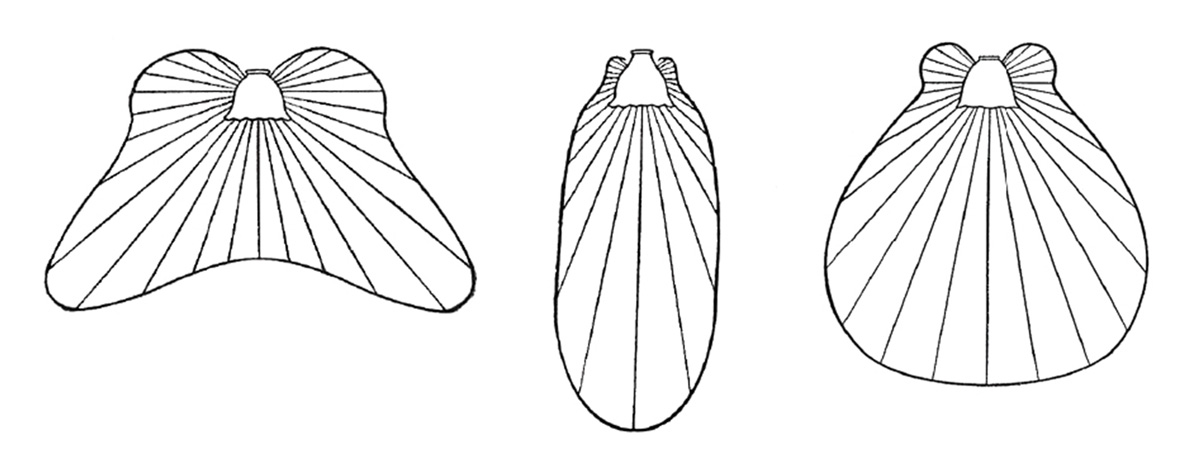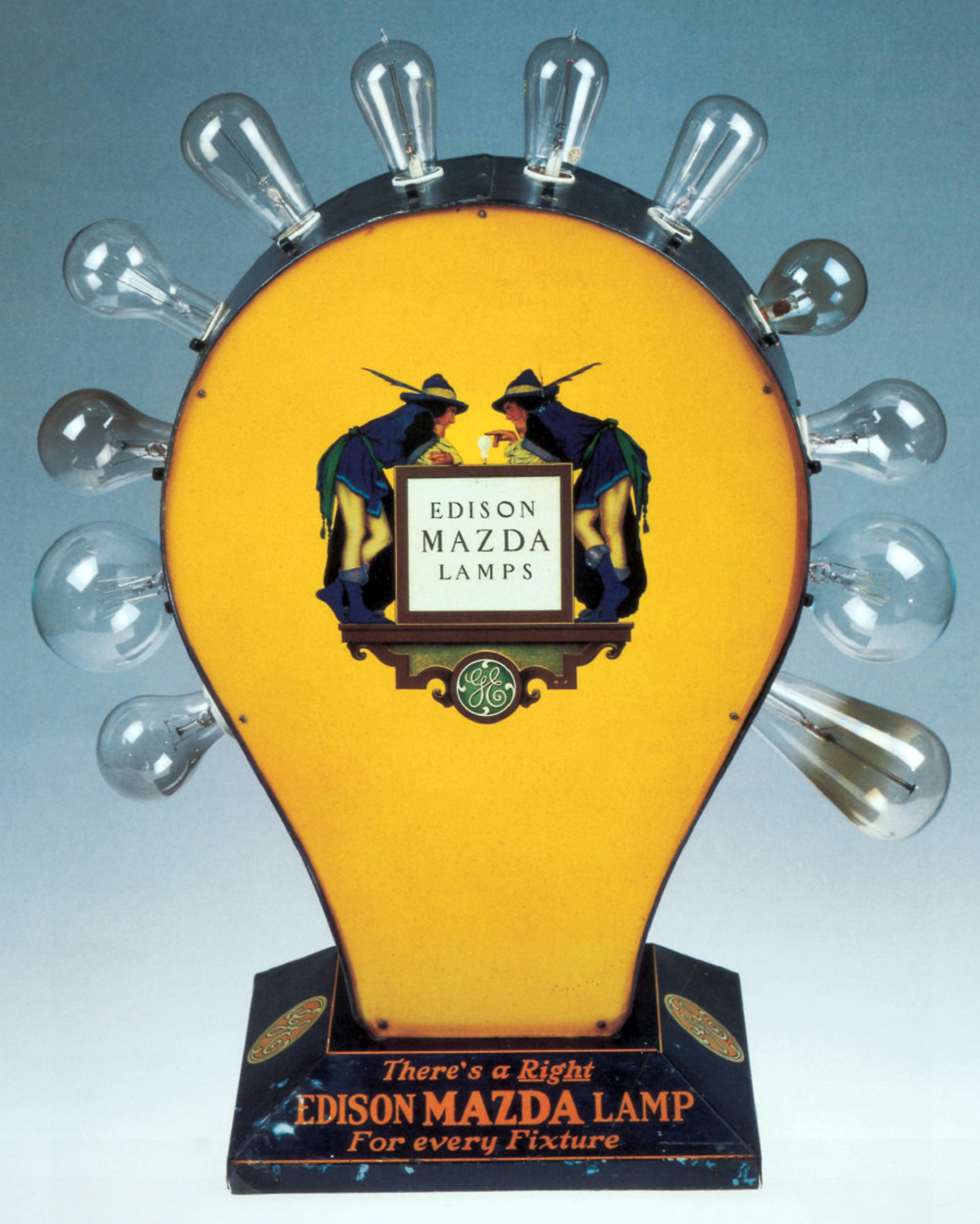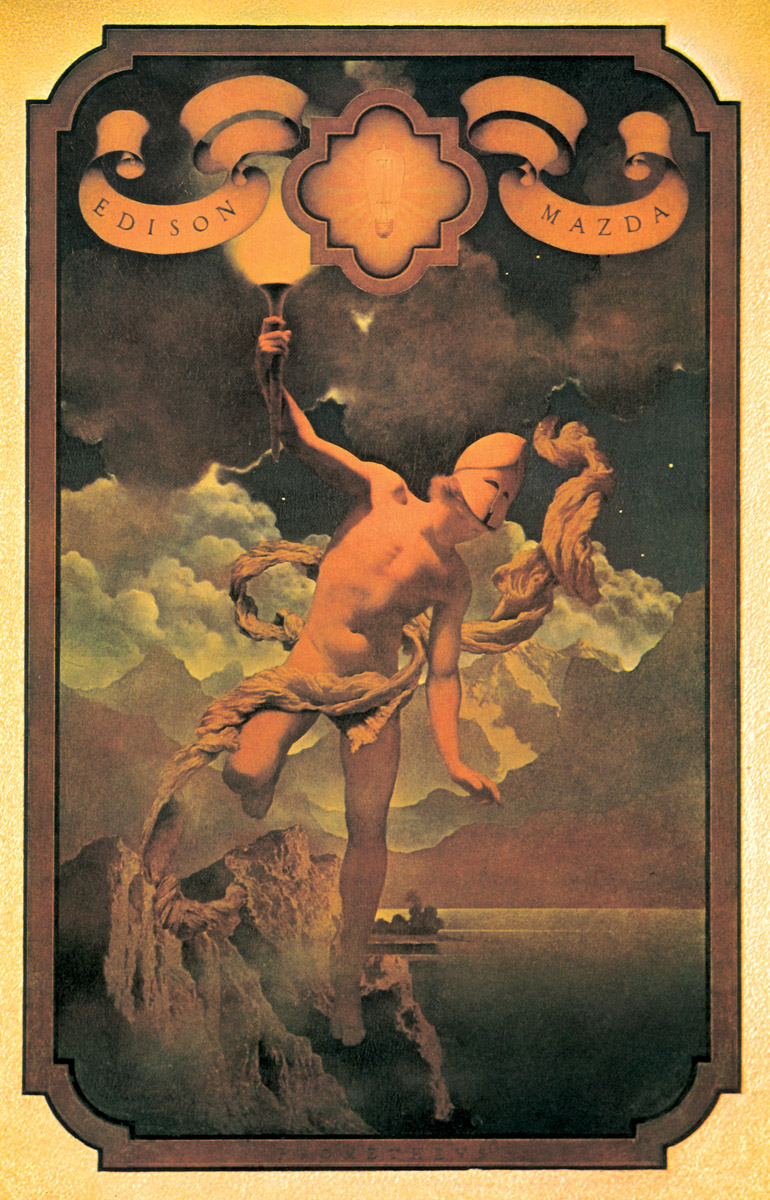Blinded by the Light
The art of illumination
Sasha Archibald
Few concepts are so intimately wed as that of knowledge and light. Yet among the myriad experiences of light—“dawning awareness,” “dim understanding,” “seeing the light,” etc.—there is one that seems to have little relationship to the province of philosophy: a kind of light that does not permit clarity of thought, but is instead blinding, painful, or disorienting. Whereas the light of illumination might be described as “the letting appear” that does not itself appear,[1] this other kind of light is said to dazzle, or to let nothing appear, at least nothing besides itself. Those lacking insight are usually considered “in the dark,” but dazzlement is often a better description: the madman of Michel Foucault’s Madness & Civilization, for instance, is not deprived of light, but actually “drunk on a light.”[2] Similarly do the cave dwellers of Plato’s allegory suffer when coaxed out into the sun. Truth, it seems, is only revealed by a very controlled and precise amount of illumination—too little of it, or too much, and light fails the task.

With the advent of electric light in the nineteenth century, the distinction between illumination and dazzlement took on new life in the literal, physical experience of the general public. Electricity at the turn of the century was not a scaled-back version of electric light today, but rather just the opposite: Finally with the means to light each crack of every sidewalk and each corner of every railway station, people did exactly that. According to one newspaper, the houses in St. Petersburg, Russia, were lit so as to see a fly on the wall, even a fly 400 paces from the source of light,[3] while another paper described with awe how “the trees and flowers are plainly visible in every detail of leaf, petal and twig ... the very stones of the gravel walk, the mosses on the wall ... are visible.”[4] Whereas most of daily life before electricity was conducted in the shadows, electro-enthusiasts aimed to eradicate the shadow completely, to march into the twentieth century in a blaze of unadulterated light. In some cases, the demand for brightness even outstripped the availability of electricity. According to Gösta M. Bergman’s history of theater lighting, the “incipient light cult” that hit theaters in the 1880s, for instance, was actually not directly attributable to electric light—only a few theaters were wired for it—but to its associative effects: electric light in a few theaters seems to have provoked brighter lights in all theaters.[5] “It would seem that [electricity’s] mere existence makes an increase of light necessary,” as one reviewer wryly commented.[6] Such bombastic enthusiasm for the new technology created spaces that were dizzyingly bright—spaces where, paradoxically, it was impossible to see anything besides the light itself.
To be fair, the brightness wasn’t all due to overzealous installation. There was little to choose from in the way of electric lights at the time, and few, if any, devices capable of diminishing the light’s intensity. The usual story of electric light (at least in America) begins with Thomas Edison unveiling his incandescent bulb at Menlo Park in 1879, but in fact, the incandescent was Edison’s attempt to improve on another form of electric illumination in widespread use—the arc lamp. Invented in 1801 by Sir Humphry Davy, the arc lamp created light (and a great amount of heat) via an electric charge arcing between two rods of carbon. The first arcs required a source of power independent to each and constant monitoring of the burning rods, but following centralized power stations (“dynamos”) and improved design, the light came into common use. It was several times over the brightest artificial illumination available: for comparison, a gas lamp measured between three and eight candlepower (the standard for light measurement at the time), a carbon incandescent between 300 and 500, and an arc lamp anywhere from 10,000 to 100,000. At the top of its range, the arc was about as bright as a modern searchlight.
“A lamp for a nightmare!” was how Robert Louis Stevenson described the sterile white light of the arc lamp, a light that completely lacked the warm orange tones of gas or yellowish cast of candlelight. “Such a light as this,” he continued, “should shine only on murders and public crime, or along the corridors of lunatic asylums, a horror to heighten horror.”[7] The arc was indeed used in lunatic asylums, but also in factories (where it was responsible for the first night shift), as well as exhibit halls, railway stations, and libraries. The light of a department store, as described by Émile Zola in his 1883 novel Ladies’ Paradise, was a penetrating “white brightness of a blinding fixity”: “There was nothing now,” Zola’s character states, “but this blinding white light.”[8] Indeed, descriptions of electric light in this period as brilliantly white are repeated ad infinitum, and epitomized in the terming of Chicago in 1893 “The Great White City,” or New York’s strip of early electric signs “The Great White Way.” In the form of street lighting, the light’s intensity created violent contrast between lit and unlit. The usual solution—raising the light and doubling its strength—exponentially increased the total amount of light, against which women were known to open their umbrellas.
There was surely a degree of pain suffered for such brilliance. It was impossible to look directly at a nearby arc lamp; even at long distances, the light seared the eye. Stories of temporary vision loss were not uncommon, and there seems to have been growing awareness in the phenomenon of after-images as a warning sign of retinal fatigue.[9] Writers complained that schools were a “factory for bad eyes”[10] and lighting specialists articulated their professional goal as alleviating the pangs most people feel when viewing buildings lit up at night.[11] The arc lamp was not the only problem, as the new carbon incandescents were also dangerously bright, especially when used in the home. In one case of “retinal burn,” a person sitting two feet from an unshaded incandescent went blind after a few weeks of daily exposure.
Louis Bell’s The Art of Illumination, first published in 1902 and revised and expanded a decade later, seems to have been the first publication to draw attention to the situation. Argued with the pedantic tone of a man who feels himself the sole voice of reason in a sea of stupidity, Bell insists that the current application of electric light is lacking both wisdom and taste, to grave consequences. The most important factor in electric illumination, he writes, is the relative intensity of the light source, or its “intrinsic brilliance.”[12] Contrary to intuition and common practice, visibility does not endlessly improve with lights of higher and higher intrinsic brilliance; it gets worse. Even the Alaskan Indians, Bell points out (illustrating with a small diagram), have the sense to protect their eyes, and from light less severe than that of an unshaded incandescent. In sum, one must always remember that “the human eye is not merely a rather indifferent optical instrument, but a physical organ.”[13]
Bell found the aesthetic effects of excessive illumination as troublesome as the physiological risks. He includes how-to instructions on lighting reception halls versus cellars versus billiards rooms, drawings of “do and don’t” lampshades, and recommendations for paint colors that best counteract the sterility of electric light. He was by no means the first to point out that too much electric light reveals things better left hidden. Theater critics had long complained that electricity undermined the illusionist effects of scenery, props, and makeup, making everything look crude and garish while at the same time destroying any perception of depth of field.[14] In the drawing rooms or parlors of the few who could afford electricity, the light made a mockery of an atmospheric evening. Neither was it very flattering. Bell’s particular rant, though, signals the receptiveness of a larger audience to such complaints—or a brief moment when electricity’s success as an illuminant was not so assured. Indeed, Bell does not hesitate to furnish advice like, “a tallow candle, just where it ought to be, is better than a misplaced lamp.”[15] Nor did the wonders of electricity dissuade him from hope in capturing the firefly’s phosphorescence.
Electric light did not waver in the balance for long. Just four years after the first edition of The Art of Illumination, the Association of Illumination Engineers convened their opening address, declaring that “our eyesight is suffering permanent injury” and thus immediate action was necessary.[16] Illumination engineering rapidly evolved as a professional field that by using a combination of optic physiology, geometry, mechanics, and entrepreneurship obviated the very concerns Bell articulated. Illumination engineers were remarkably quick to understand and solve the particular problems of electric light, and to provide the means by which electricity moved from being a conspicuous technology to an ordinary one. Simply put, illumination engineers made electric light useful. For their accomplishments, they were heralded as “artists” and lighting a bona fide art form—rightly so, given the crudity of their precedent.

New inventions combined with smart advertising to assure electricity’s success as an illuminant, a success best judged by the ubiquity of electric light today. By 1915, the arc lamp was consigned to the lighting of skyscrapers and to warfare, where it was finally put to good use in startling the enemy. The National X-Ray Reflector Company made its first fortune in the sale of light reflectors that promised to “Tire Eyes Less!” by reducing electric glare. General Electric vastly expanded their line of fixtures elaborately shaped as flower bouquets, vines, and buds in a successful effort to soften the connotations of electric light and increase its appeal to female consumers.[17] For similar reasons, the company also renamed the incandescent the “Mazda,” based on the name of the Persian god of fire, and hired Maxfield Parrish, the wildly popular artist and illustrator, to design print advertisements and product merchandise, including a celebrated line of calendars. In most cases, Parrish’s GE ads do not appear to be related to electricity at all, but depict Venetian lamplighters, pretty flamenco dancers, or primitive man with his fire in the background and a naked nymph in the foreground—but this was exactly the point. Tiffany lamps (and their imitations), first produced in 1899 and the result of a nearly fifteen-year collaboration between Louis Tiffany and Thomas Edison, proliferated, as a means to diffuse and pleasantly color the harsh electric whiteness. And finally, in 1915, the landmark invention in the history of electric light made innocuous: concealed light bulbs. Taking the lampshade one drastic step further, electric bulbs at the 1915 Panama-Pacific World’s Exposition were hidden under statues, embedded in sidewalks, camouflaged by bushes, or tucked in architectural adornments.

Of course, not all electric light became mundane. New York City’s Great White Way, for instance, the panoply of moving electric signs on Broadway, wouldn’t reach its zenith for another two decades, while neon lights, light shows, and nocturnal architecture—the idea of designing architecture toward a building’s nighttime rather than daytime appearance (e.g. Las Vegas)—were still to come. The enthusiasm for making electric light spectacular, however, was always matched by an equal enthusiasm, albeit much more difficult to chronicle, for making electric light invisible. The difference between these two modes of illumination crystallized and split paths in the first two decades of the twentieth century, the former succeeding by loudly declaring itself, and the latter, by obscuring its own artifice.
In 1929, the Prefect of the Seine ordered the removal of all electric signs in France not directly adjacent to the businesses they advertised. French citizens, wholly in support of the measure (as were Germans), haughtily declared, “Paris is proud to be known as the City of Light, but she wants it to be intellectual rather than electric.”[18] Electric light was now the thing that crassly announced its own existence, and America was free to use it how it pleased. The rest—the light that simply illuminated—was returned to philosophy.
- Hans Blumenberg, “Light as a Metaphor for Truth,” Modernity and the Hegemony of Vision, ed. David Michael Levin (Berkeley: University of California Press, 1993), p. 31.
- Michel Foucault, Madness and Civilization: A History of Insanity in the Age of Reason, trans. Richard Howard (New York: Vintage Books, 1988), p. 108.
- Wolfgang Schivelbusch, Disenchanted Night: The Industrialization of Light in the 19th Century, trans. Angela Davies (Berkeley: University of California Press, 1995), p. 118.
- The Sanitarian, 1878. Cited by Schivelbusch, p. 114.
- Gösta M. Bergman, Lighting in the Theatre (Stockholm: Almquist & Wiksell International, 1977), p. 287.
- E. Mascart, from J. Lefevre, L’Electricité au théatre (1884). Cited by Bergman, p. 296.
- Robert Louis Stevenson, “A Plea for Gas Lamps” (1917). Cited by Schivelbusch, p. 134.
- Cited in Christoph Asendorf, Batteries of Life: On the History of Things and Their Perception in Modernity, trans. Don Reneau (Berkeley: University of California Press, 1993), p. 161.
- Staring at an arc lamp, as Schivelbusch notes, was very much like staring at a “small sun” (Schivelbusch, p. 118). After-images had in fact been studied as a scientific phenomenon for some time. Three famous nineteenth-century scientists, including Sir David Brewster, inventor of the kaleidoscope, severely damaged their eyes by staring at the sun in order to produce after-images. See Jonathan Crary, Techniques of the Observer: On Vision and Modernity in the Nineteenth Century (Cambridge, Mass: MIT Press, 1992), p. 141.
- Cited in Louis Bell, The Art of Illumination (New York: McGraw-Hill, 1912), p. 344.
- W. D’A. Ryan, “Illumination of the Panama-Pacific International Exposition,” General Electric Review, Vol XVIII, no. 6 (June 1915), p. 580.
- Bell, p. 11
- Ibid., p. 2
- Bergman, p. 294. See also Schivelbusch, p. 199.
- Bell, p. 306
- Schivelbusch, p. 180.
- Flower motifs were supposedly Mary Edison’s idea, and the only known instance of the inventor’s wife having any part in his business decisions. See Charles Bazerman, The Languages of Edison’s Light (Cambridge, Mass: MIT Press, 1999).
- Cited in William Leach, Land of Desire: Merchants, Power and the Rise of a New American Culture (New York: Pantheon, 1993), p. 343.
Sasha Archibald is an associate editor of Cabinet.